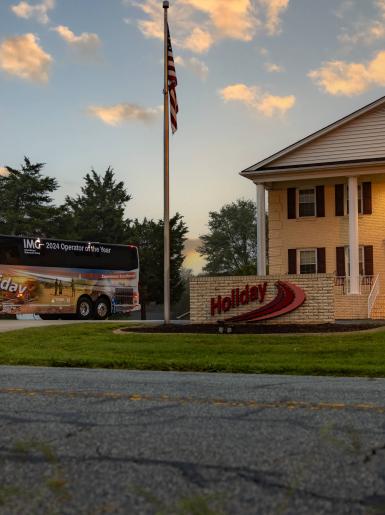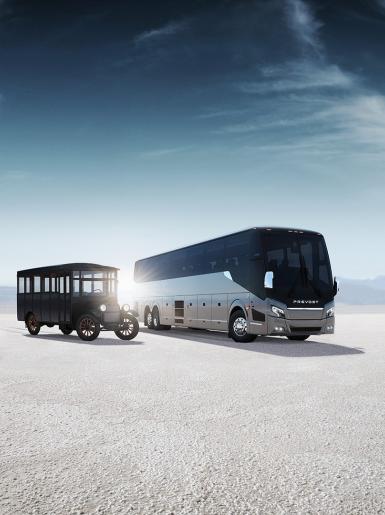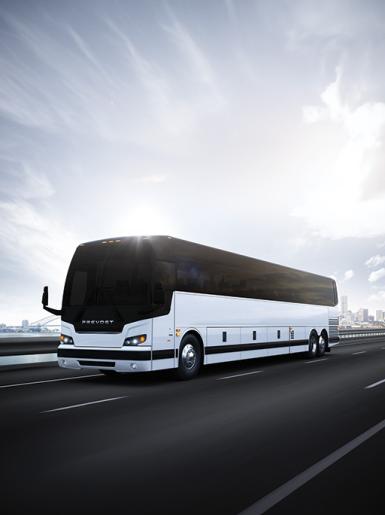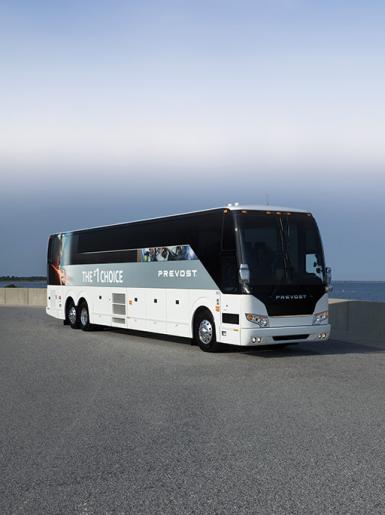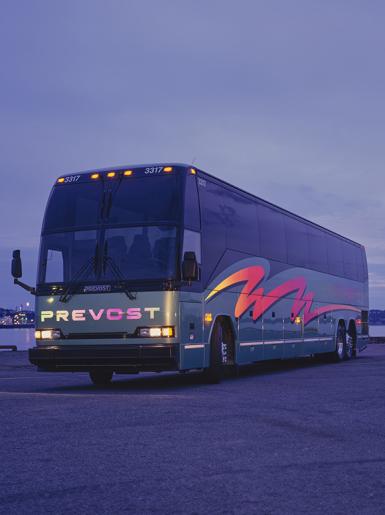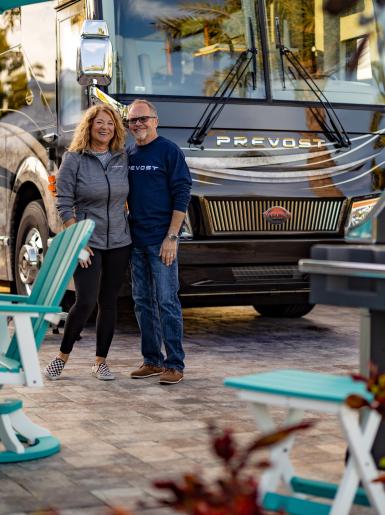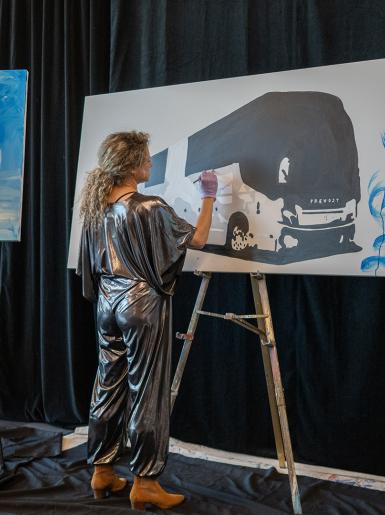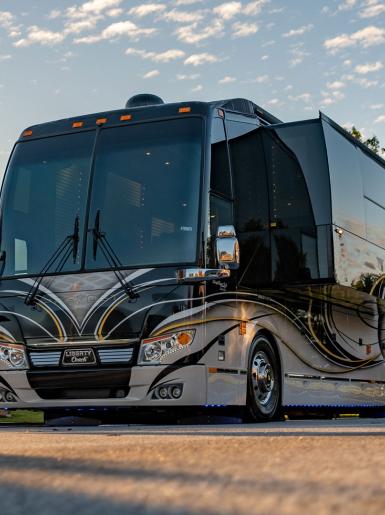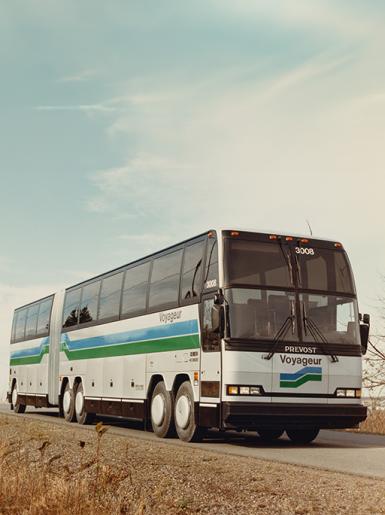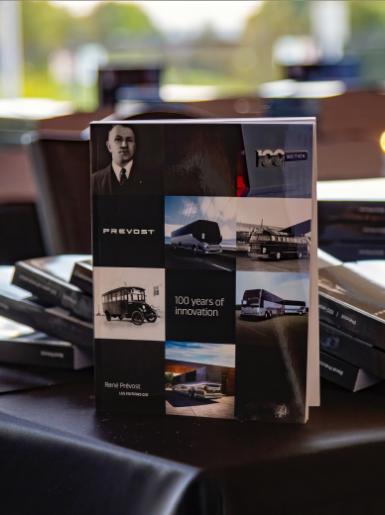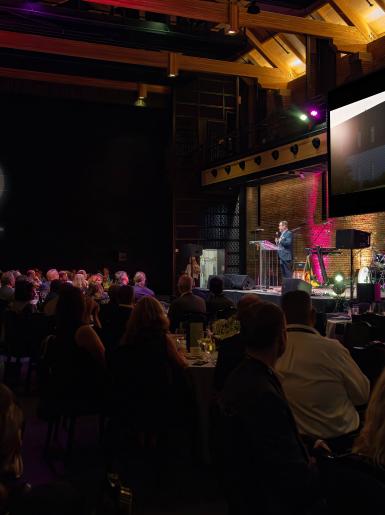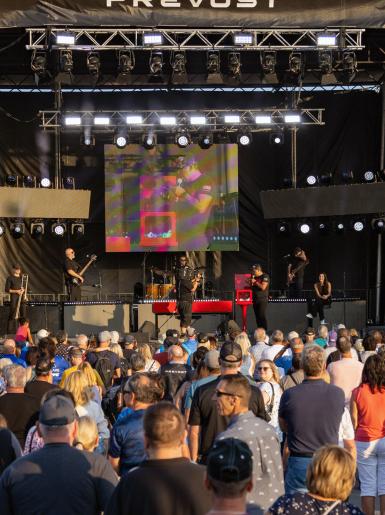History Highlights
The 1950s
Prevost began the '50s with strong production, though a mid-decade downturn loomed. The North American economy thrived with an average of four million babies born each year to begin the Baby Boom. Suburbia grew with more homes and over 3.5 million personal automobiles, leading to a decline in bus travel felt by operators and manufacturers throughout North America.
By the decade's end, only two manufacturers remained in the United States. Luckily for Prevost, an industrialist seized the opportunity to pull the company out of crisis.

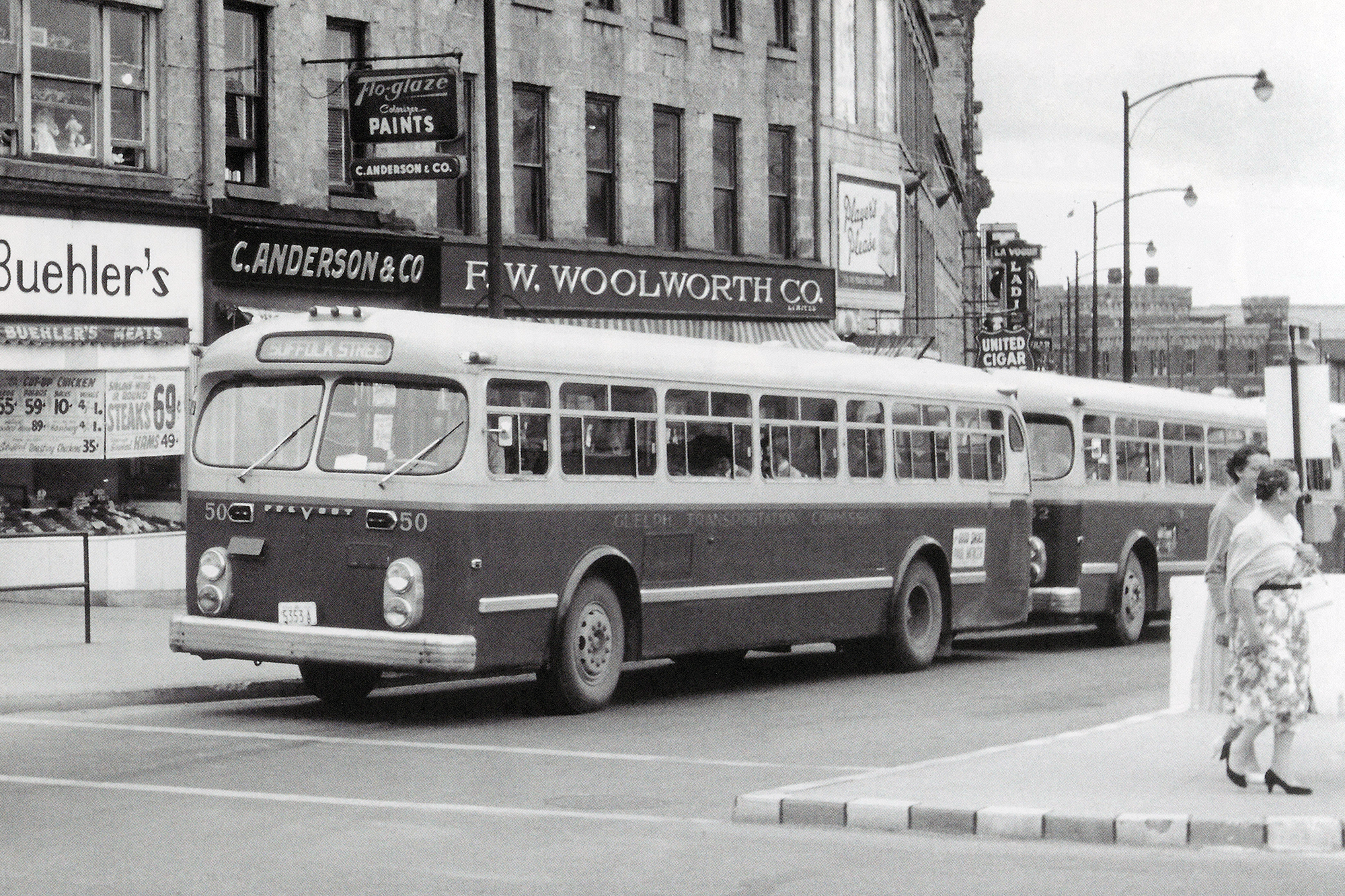
In 1951, Prevost received 100 orders for highway buses from the Canadian government, including 66 for the Department of National Defence. This established Prevost as a reliable, high-performance motorcoach manufacturer.

From left to right: Albert Lacombe, sales manager; Louis Bilodeau, associate; and Eugène Prévost, founder of Prevost.

The 1951 Prevocar model and attendees of the Québec Bus Owners' Convention in Montréal. Clarisse Prévost is pictured seventh from the left.
For a brief period in the 1950s, Prevost enjoyed substantial success from Interurbain and Prevocar sales. More than 100 coaches were produced in 1949, 1950, and 1952, making Prevost the largest intercity coach builder in Canada.
Prevocar became the most advanced coach built in Canada at the time, establishing Prevost as an innovative builder willing to embrace new technology.


In 1954, Prevocar introduces the engine and storage compartment.
Extensive market and technical research was conducted to generate innovative ideas for new product lines. However, Prevost experienced financial difficulties in the middle of the decade. Only three buses were produced in 1956, leading many to believe the company would not survive.
Salvation came in 1957 when Paul Normand stepped in as president, bringing new life and products to the company and renaming it Prevost Car Inc. The company's mission became to design and build intercity motorcoaches offering optimal comfort and reliability.

Industrialist Paul Normand acquires the company in 1957.

The silver-sided LeNormand was unveiled in 1957, featuring a diesel engine, theater-style seating, and pneumatic suspension, marking the inaugural model of the new era.
As the 1950s came to a close, Prevost emerged from a period of uncertainty with renewed strength and vision. This era of transformation and revival set the stage for Prevost's legacy, characterized by a commitment to innovation, quality, and excellence that continues to define the company today.


